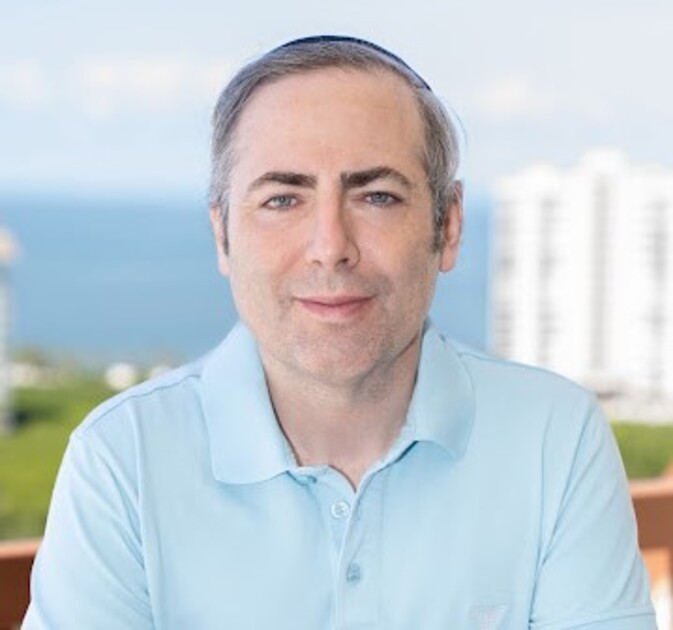
Since abortion is entering into the national debate once again, it is good to see what the Jewish tradition has to say about a fetus’s rights and personhood. One of the questions that arise in considering the legality and morality of the unborn child is, when does this “bunch of cells” turn into a human with its own identity and rights? After all, we all are just a “bunch of cells”, just like the tomato plant in my backyard. The issue is when does that uniquely human cluster of cells coalesce into a human?
In other Psychology of the Dafs (67 & 69) we explored this to some extent. Today we are going analyze the extent to which the fetus is considered as a separate entity from the mother and to what extent it is not. In the language of our Gemara on amud aleph, עובר ירך אמו is the fetus considered like it’s mother’s body part? Keep in mind, in Judaism, even one’s own body is sacred and we are not allowed to injure ourselves gratuitously (Bava Kama 90b, 91b), so even if the fetus would be considered as an organ in the mother’s body, an abortion would require a strong medical rationale. The difference is that if it is not considered killing a human being, then of course the criteria for the medical rationale is lower and even severe emotional distress is probably sufficient.
There are two Mishnas that address, albeit in different ways, the issue of the identity of the fetus.
Mishna Ohalos (7:1)
אִשָּׁה שֶׁהִיא מַקְשָׁה לֵילֵד, מְחַתְּכִין אֶת הַוָּלָד בְּמֵעֶיהָ וּמוֹצִיאִין אוֹתוֹ אֵבָרִים אֵבָרִים, מִפְּנֵי שֶׁחַיֶּיהָ קוֹדְמִין לְחַיָּיו. יָצָא רֻבּוֹ, אֵין נוֹגְעִין בּוֹ, שֶׁאֵין דּוֹחִין נֶפֶשׁ מִפְּנֵי נָפֶשׁ:
If a woman is having trouble giving birth, they cut up the child in her womb and brings it forth limb by limb, because her life comes before the life of [the child]. But if the greater part of the child’s body has come out, one may not touch it, for one may not set aside one person's life for that of another.
There are two clauses in the Mishna: (1) When the child is still in utero (2) When most of the child has exited the mother’s womb. The simple reading of the Mishna is that the difference between clause number one and number two is if the child is considered a full human being. In clause number two, since the majority of the child has exited the womb, even though he is causing his mother’s death, his life is now equal to hers and so no action can be taken to protect the mother at the child’s expense. This reading of the Mishna implies that an unborn child, while still described by the Mishna as a “nefesh”, a living soul, is not considered as full a human as the mother. This also seems to be in accordance with Rashi (Sanhedrin 72b, Yatzah Rosho).
However, the Rambam (Laws of Murder 1:8) seems to read the Mishna differently.
אַף זוֹ מִצְוַת לֹא תַּעֲשֶׂה שֶׁלֹּא לָחוּס עַל נֶפֶשׁ הָרוֹדֵף. לְפִיכָךְ הוֹרוּ חֲכָמִים שֶׁהָעֻבָּרָה שֶׁהִיא מַקְשָׁה לֵילֵד מֻתָּר לַחְתֹּךְ הָעֵבָּר בְּמֵעֶיהָ בֵּין בְּסַם בֵּין בְּיָד מִפְּנֵי שֶׁהוּא כְּרוֹדֵף אַחֲרֶיהָ לְהָרְגָהּ. וְאִם מִשֶּׁהוֹצִיא רֹאשׁוֹ אֵין נוֹגְעִין בּוֹ שֶׁאֵין דּוֹחִין נֶפֶשׁ מִפְּנֵי נֶפֶשׁ וְזֶהוּ טִבְעוֹ שֶׁל עוֹלָם:
This, indeed, is one of the negative mitzvos - not to take pity on the life of a rodef. (A rodef is someone who is attacking another person and putting him in mortal danger.)
On this basis, our Sages ruled that when complications arise and a pregnant woman cannot give birth, it is permitted to abort the fetus in her womb, whether with a knife or with drugs. For the fetus is considered a rodef of its mother.
If the head of the fetus emerges, it should not be touched, because one life should not be sacrificed for another. Although the mother may die, this is the nature of the world.
(Side point: It appears that the Rambam’s text in the Mishna is Rosho “head”, not Rubo “majority of its body.)
From the Rambam we see that the fetus may be considered a live human even before it leaves the womb. Rather, we can abort the fetus not because it is less human but because it is a rodef. Even though you could say the reverse, why should the mother’s life take precedence over the baby’s, maybe she is a rodefes, attacking the baby? We must say that since the mother is just doing normal life functions, and somehow the baby’s birth complications are going to kill her, it is as if the baby is the aggressor. The exception to this is if the baby’s head emerges from the womb, his completion of the birth process, despite possibly killing the mother, does not give him a status of rodef. The Rambam says it’s because it’s the way of the world. I believe the Rambam’s rationale is that once the child is now almost born, it is no longer a birth complication that is making the child a rodef, rather it is two humans competing for the same resource and right to live. It’s not that the baby went from a status of less human to more human. Instead, once the birth is almost complete, his status of rodef somehow changes and he is no more the aggressor to her, than she is to him, as they both exist now outside the labor process.
We have a different Mishna (Arachin 7a) that indicates somewhat different criteria for determining the fetus’s status. The Mishna discusses the unfortunate case of a pregnant woman who also was sentenced to death. Do we wait to administer the death penalty until after she delivers, or literally and completely, the child is considered to be just another organ in her body and there is no need to wait:
האשה שיצאה ליהרג אין ממתינין לה עד שתלד האשה שישבה על המשבר ממתינין לה עד שתלד
In the case of a pregnant woman who is taken by the court to be executed, the court does not wait to execute her until she gives birth. Rather, she is killed immediately. But with regard to a woman taken to be executed who is in the throes of labor, the court waits to execute her until she gives birth.
Once again, we have two clauses in the Mishna:
- Prior to going into labor the child is merely part of the mother. If she is sentenced to death, so is the child, so to speak.
- Once she enters labor, the child is no longer considered part of the mother and now we wait until the child is born before we carry out the execution.
The second clause of this Mishna does not fully correspond with the second clause in our first Mishna. In the first Mishna the child is considered an entity only when mostly exited from the womb, or according to Rambam’s text, when his head emerges. Here, the child is already a separate entity when labor begins. This is an apparent contradiction.
According to the way we have been learning the first Mishna so far according to Rashi, we must say something like this: The child is already a separate entity once labor begins, while it still is not fully fledged in that it’s life can take precedence over the mother’s life, as in Mishna one. That only comes when it exits the womb.
Perhaps the Rambam would hold that the child becomes a separate individual and entity the moment labor begins. However, the child is still a rodef until he (his head) exits the womb.
Modern poskim also debate whether a fetus is considered a separate human, or potential life that must be respected in the same manner as human seed which is prohibited to waste, or something in between a full human and merely seed. The degree to which the fetus is considered a full human is the degree of how much danger or emotional distress is required to justify an abortion. And then we also saw (Psychology of the Daf Yevamos 69) that before 40 days of gestation, there are grounds to consider the child as not yet a human. Rav Moshe (Iggeros Moshe CM II:69) holds of the strictest criteria, that the child is a full human and only could be aborted if the mother is in clear danger to her life and thus the fetus is a rodef. Tzitz Eiiezer (9:52:3:3) holds that the fetus only has the status of an organ in the mother’s body, and therefore when there is a strong medical need, even if not life threatening, an abortion may be performed. Some earlier acharonim also had similar opinions see Maharit (1:97), and Chavos Yair (31).
Of course, no matter what the halacha may be, the emotional rigors of abortion and potential lasting sense of loss and guilt should not be taken lightly. Therefore, aside from seeking skilled rabbinical guidance for halakhic advice in regard to abortion, the hashkafic and emotional support from a Rav is critical as well. This is not merely about getting a “heter”. It is about feeling that God is with you when you have to make decisions that, regardless of which way you go, will change the rest of your life.
Translations Courtesy of Sefaria, except when, sometimes, I disagree with the translation ![]()
Do you like what you see? Please subscribe and also forward any articles you enjoy to your friends, (enemies too, why not?)
 Previous
Previous

